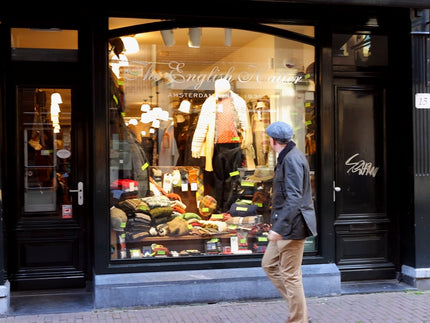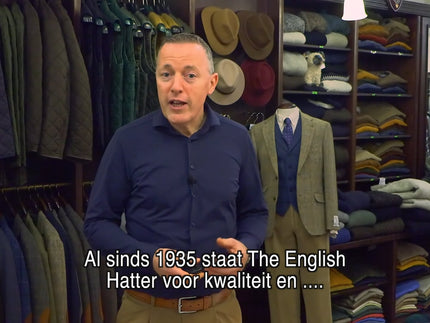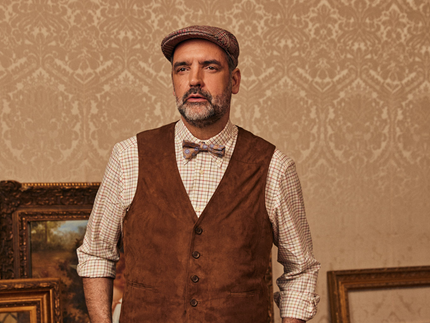Fashion trend or not, The English Hatter (what's in a name…) has been selling an extensive collection of hats for years. In contrast to the abundance of hat styles in the winter, there is really only one classic summer hat: The Panama hat.
 The beautiful light-colored and finely woven hats are made from the straw of the South American Toquilla palm plant. Although the name suggests that the origin of this world-famous hat lies in Panama, the original Panama is made in Ecuador. There the hat is better known as Sombrero de Paja Toquilla, or simply straw hat. Hats have been woven, worn and traded in Ecuador since the beginning of the 17th century. The industry grew steadily and around the 19th century the hats from Ecuador were exported to Europe, America and Asia. Due to the import restrictions in America at the time, the hats were exported via an authorized customs office in Panama. As a result, all hats produced in Ecuador were given a customs stamp from that country, which is why these hats were called Panama hats. Until today. Although in the 19th century century, many gold miners traveled to California via Panama, where they bought hats, the Panama hat did not reach a wide audience in the United States until Theodore Roosevelt was photographed wearing one while visiting the construction site of the Panama Canal. Later, movie stars, politicians and notable fashion figures appeared in Panama hats. Hercule Poirot, Robert Redford in The Great Gatsby and Gregory Peck in To Kill a Mockingbird are just a few of the characters who wore this famous hat.
The beautiful light-colored and finely woven hats are made from the straw of the South American Toquilla palm plant. Although the name suggests that the origin of this world-famous hat lies in Panama, the original Panama is made in Ecuador. There the hat is better known as Sombrero de Paja Toquilla, or simply straw hat. Hats have been woven, worn and traded in Ecuador since the beginning of the 17th century. The industry grew steadily and around the 19th century the hats from Ecuador were exported to Europe, America and Asia. Due to the import restrictions in America at the time, the hats were exported via an authorized customs office in Panama. As a result, all hats produced in Ecuador were given a customs stamp from that country, which is why these hats were called Panama hats. Until today. Although in the 19th century century, many gold miners traveled to California via Panama, where they bought hats, the Panama hat did not reach a wide audience in the United States until Theodore Roosevelt was photographed wearing one while visiting the construction site of the Panama Canal. Later, movie stars, politicians and notable fashion figures appeared in Panama hats. Hercule Poirot, Robert Redford in The Great Gatsby and Gregory Peck in To Kill a Mockingbird are just a few of the characters who wore this famous hat.
The authentic hand-woven Panama hats come from the small town of Montecristi, where the best hat manufacturers are located. The hats are not woven by machine, but by hand; a fascinating process. It is not for nothing that the hand-weaving of Panama hats was declared an intangible cultural heritage by UNESCO in 2012.
The process begins with the hair-fine straw, which can only be found in the equatorial rainforests of Ecuador. The specific microclimate in this area is where the best quality plants grow. The heart of the plant, the cogollo, is ultimately the perfect material for making hair-fine straw. The cogollos are harvested by hand, after which the stems are boiled and dried. Once dry, the fibers are bleached in sulfur smoke and then split into even finer straws.
 The weaving begins with the middle part of the hat, the crown, and is then woven outwards in a circular pattern. Once the crown is large enough, it is placed on a medium-height tripod with a hat block in the shape of the crown on top. Once the hat is the right size, the edges are finished. This is a specialist job. The hats are then washed, bleached and softened using sulphur powder. Finally, the hats are trimmed and ironed into a shape that begins to resemble a finished hat.
The weaving begins with the middle part of the hat, the crown, and is then woven outwards in a circular pattern. Once the crown is large enough, it is placed on a medium-height tripod with a hat block in the shape of the crown on top. Once the hat is the right size, the edges are finished. This is a specialist job. The hats are then washed, bleached and softened using sulphur powder. Finally, the hats are trimmed and ironed into a shape that begins to resemble a finished hat.
The elegant shape and lightweight, breathable properties of the Panama make it the ultimate summer hat. Indispensable in every wardrobe. The English Hatter has a wide collection of Panama hats. Both from major brands such as Borsalino and Stetson as well as their own brand The English Hatter. They keep your head cool. Each and every one.

 The beautiful light-colored and finely woven hats are made from the straw of the South American Toquilla palm plant. Although the name suggests that the origin of this world-famous hat lies in Panama, the original Panama is made in Ecuador. There the hat is better known as Sombrero de Paja Toquilla, or simply straw hat. Hats have been woven, worn and traded in Ecuador since the beginning of the 17th century. The industry grew steadily and around the 19th century the hats from Ecuador were exported to Europe, America and Asia. Due to the import restrictions in America at the time, the hats were exported via an authorized customs office in Panama. As a result, all hats produced in Ecuador were given a customs stamp from that country, which is why these hats were called Panama hats. Until today. Although in the 19th century
The beautiful light-colored and finely woven hats are made from the straw of the South American Toquilla palm plant. Although the name suggests that the origin of this world-famous hat lies in Panama, the original Panama is made in Ecuador. There the hat is better known as Sombrero de Paja Toquilla, or simply straw hat. Hats have been woven, worn and traded in Ecuador since the beginning of the 17th century. The industry grew steadily and around the 19th century the hats from Ecuador were exported to Europe, America and Asia. Due to the import restrictions in America at the time, the hats were exported via an authorized customs office in Panama. As a result, all hats produced in Ecuador were given a customs stamp from that country, which is why these hats were called Panama hats. Until today. Although in the 19th century The weaving begins with the middle part of the hat, the crown, and is then woven outwards in a circular pattern. Once the crown is large enough, it is placed on a medium-height tripod with a hat block in the shape of the crown on top. Once the hat is the right size, the edges are finished. This is a specialist job. The hats are then washed, bleached and softened using sulphur powder. Finally, the hats are trimmed and ironed into a shape that begins to resemble a finished hat.
The weaving begins with the middle part of the hat, the crown, and is then woven outwards in a circular pattern. Once the crown is large enough, it is placed on a medium-height tripod with a hat block in the shape of the crown on top. Once the hat is the right size, the edges are finished. This is a specialist job. The hats are then washed, bleached and softened using sulphur powder. Finally, the hats are trimmed and ironed into a shape that begins to resemble a finished hat.

